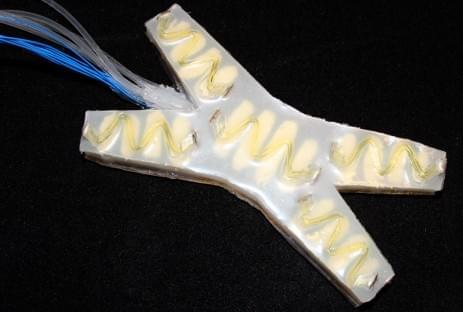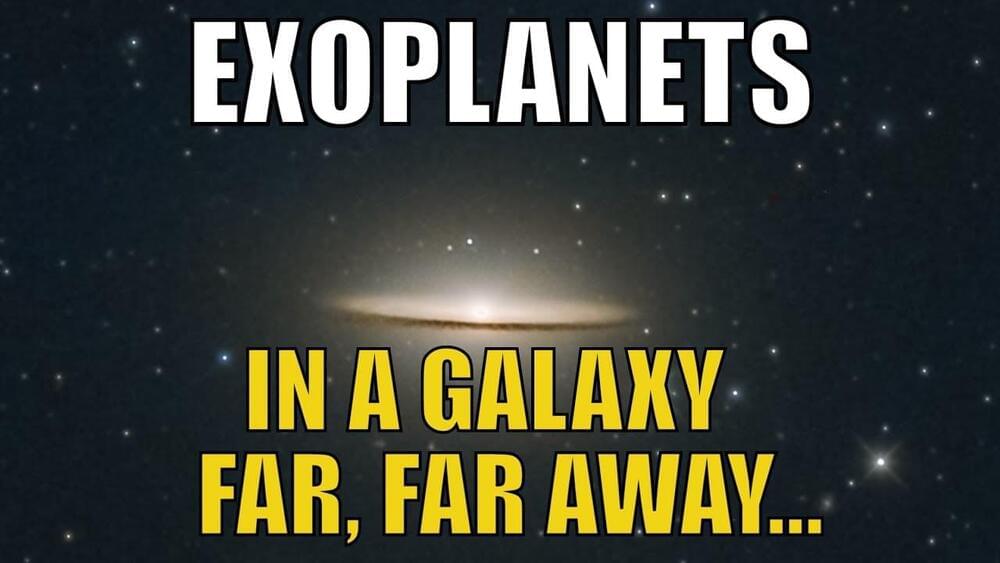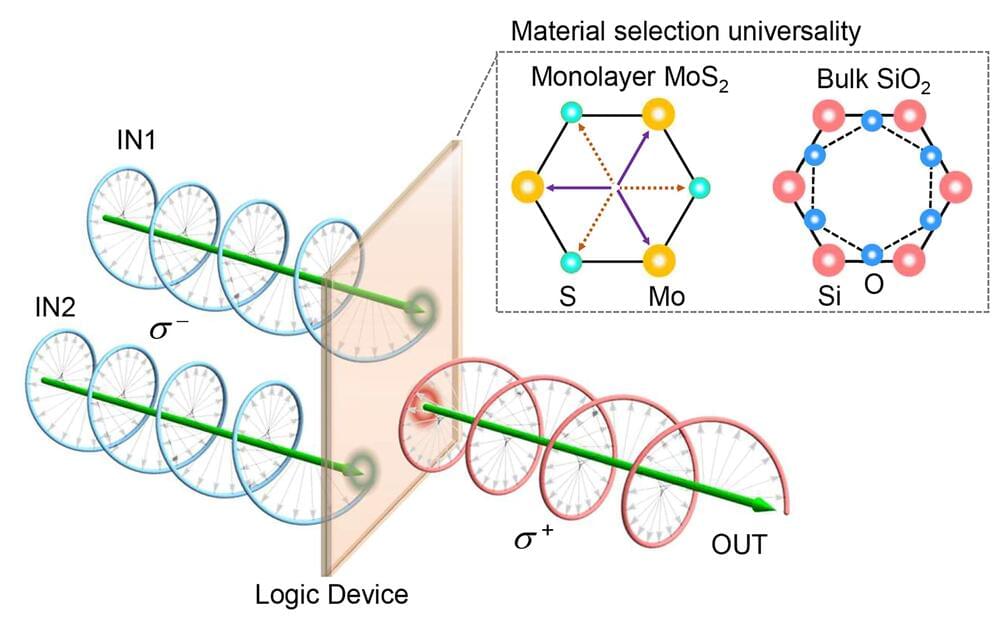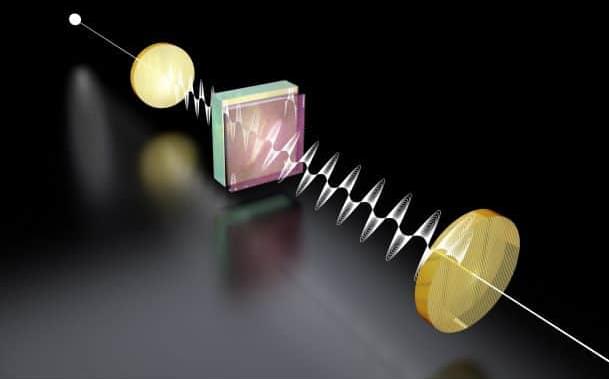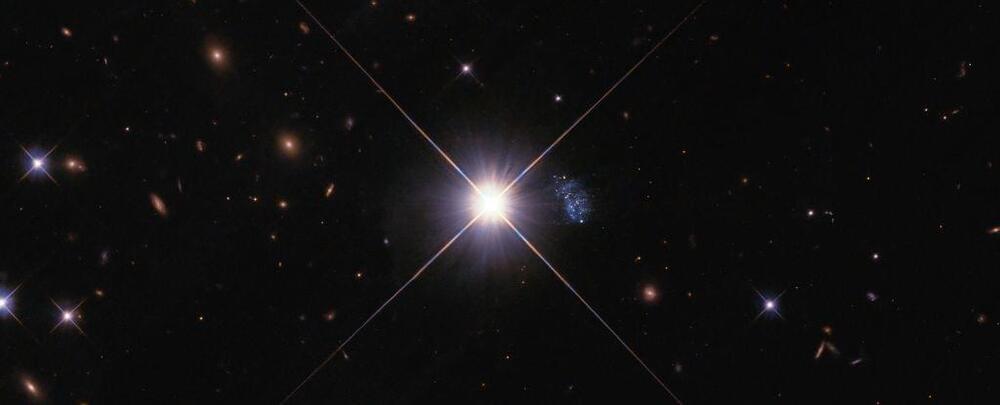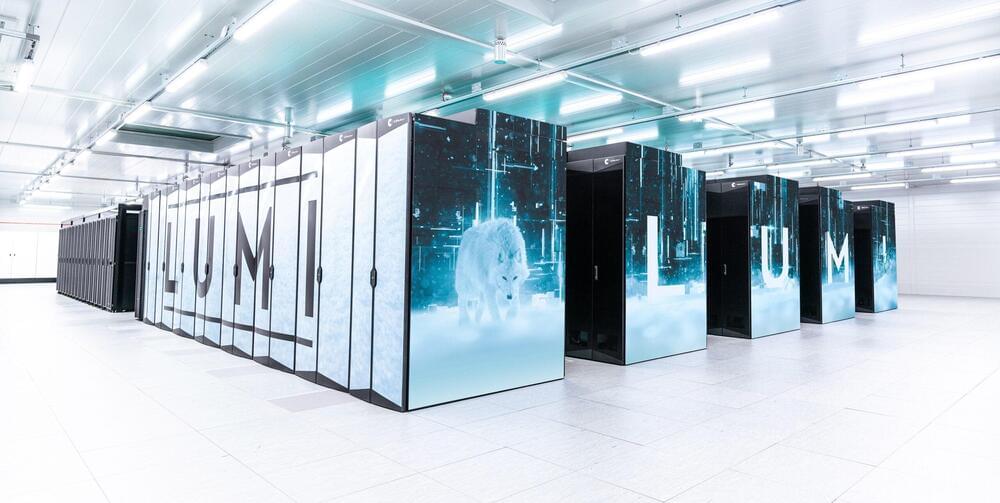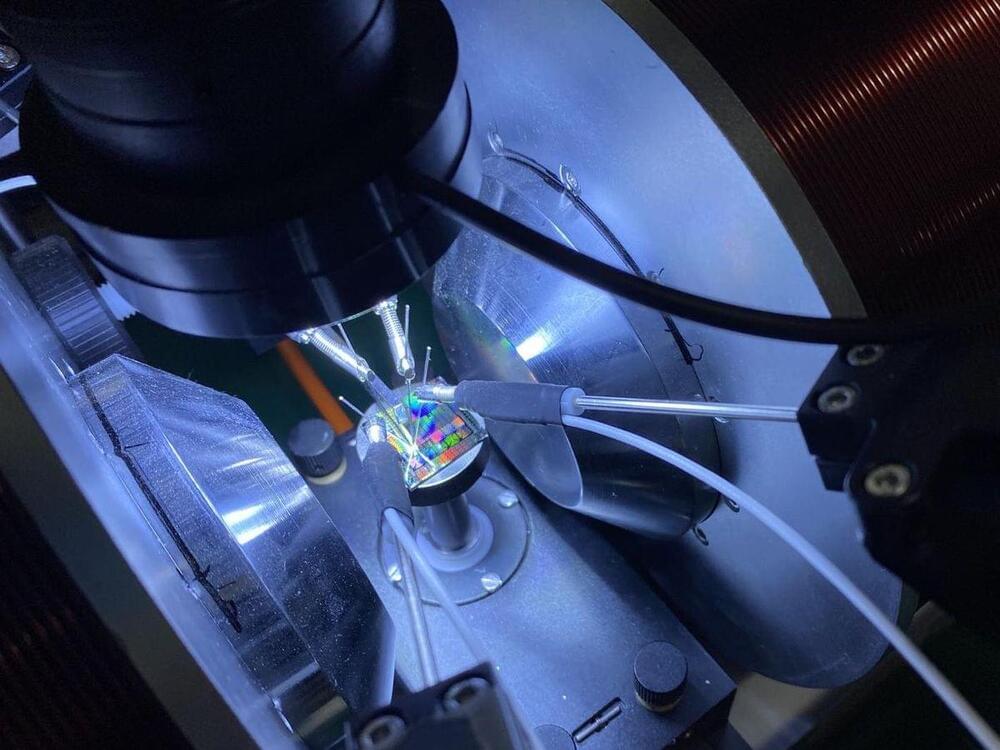For years, Shepherd’s Organic Robotics Lab has used stretchable fiber-optic sensors to make soft robots and related components – from skin to wearable technology – as nimble and practical as possible.
In fiber-optic sensors, light from a LED is sent through an optical waveguide, and a photodiode detects changes in the beam’s intensity to determine when the material is being deformed. One of the virtues of the technology is that waveguides are still able to propagate light if they are punctured or cut.
The researchers combined the sensors with a polyurethane urea elastomer that incorporated hydrogen bonds, for rapid healing, and disulfide exchanges, for strength.
